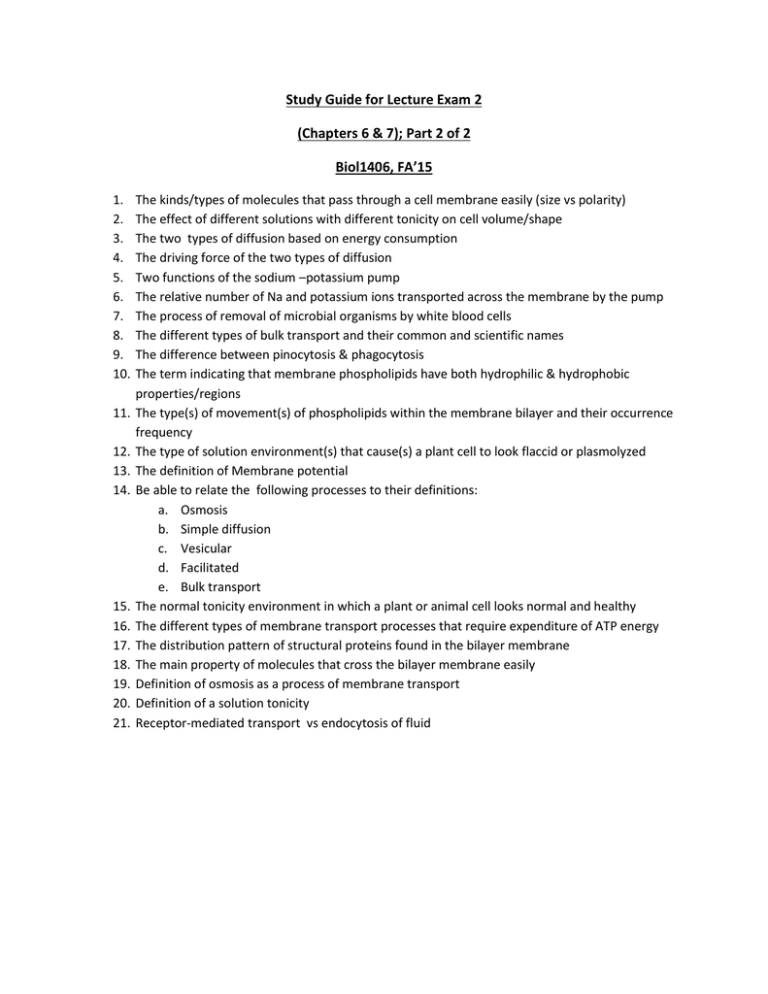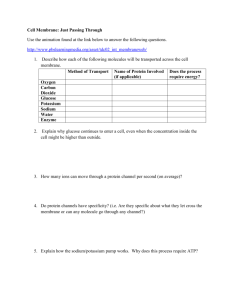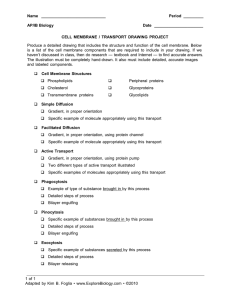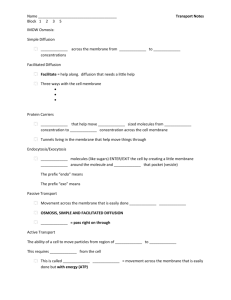Study Guide-Lect Exam 2 Part 2-Chap 6-7.doc
advertisement

Study Guide for Lecture Exam 2 (Chapters 6 & 7); Part 2 of 2 Biol1406, FA’15 1. 2. 3. 4. 5. 6. 7. 8. 9. 10. 11. 12. 13. 14. 15. 16. 17. 18. 19. 20. 21. The kinds/types of molecules that pass through a cell membrane easily (size vs polarity) The effect of different solutions with different tonicity on cell volume/shape The two types of diffusion based on energy consumption The driving force of the two types of diffusion Two functions of the sodium –potassium pump The relative number of Na and potassium ions transported across the membrane by the pump The process of removal of microbial organisms by white blood cells The different types of bulk transport and their common and scientific names The difference between pinocytosis & phagocytosis The term indicating that membrane phospholipids have both hydrophilic & hydrophobic properties/regions The type(s) of movement(s) of phospholipids within the membrane bilayer and their occurrence frequency The type of solution environment(s) that cause(s) a plant cell to look flaccid or plasmolyzed The definition of Membrane potential Be able to relate the following processes to their definitions: a. Osmosis b. Simple diffusion c. Vesicular d. Facilitated e. Bulk transport The normal tonicity environment in which a plant or animal cell looks normal and healthy The different types of membrane transport processes that require expenditure of ATP energy The distribution pattern of structural proteins found in the bilayer membrane The main property of molecules that cross the bilayer membrane easily Definition of osmosis as a process of membrane transport Definition of a solution tonicity Receptor-mediated transport vs endocytosis of fluid








